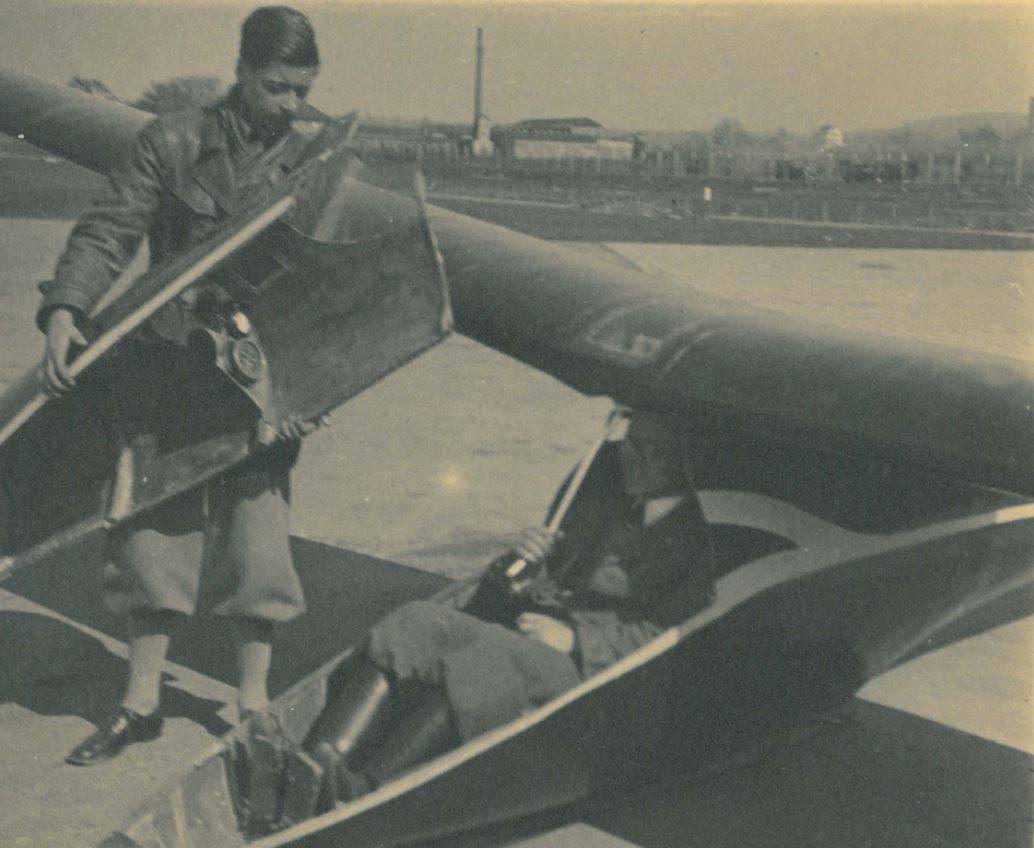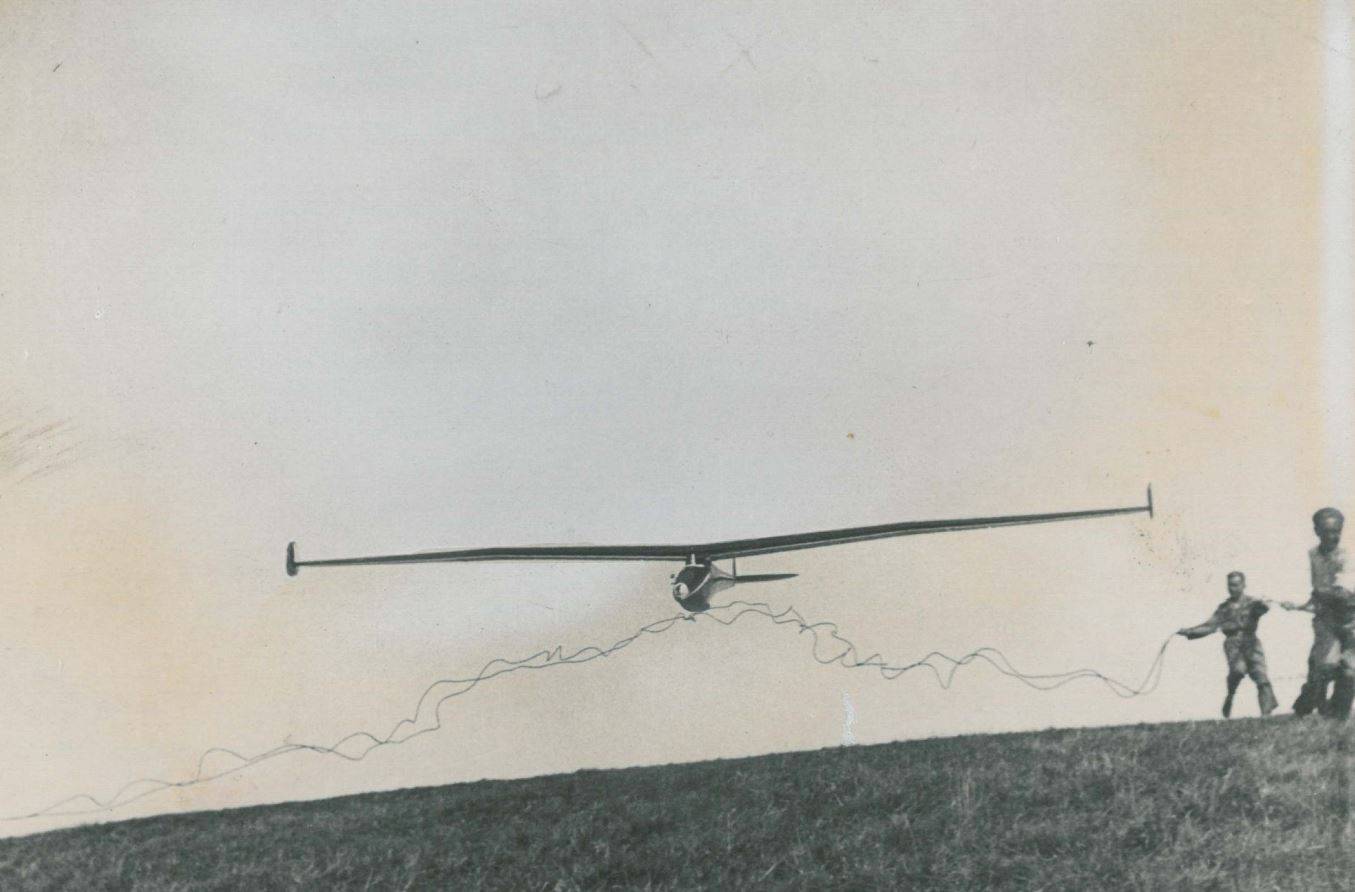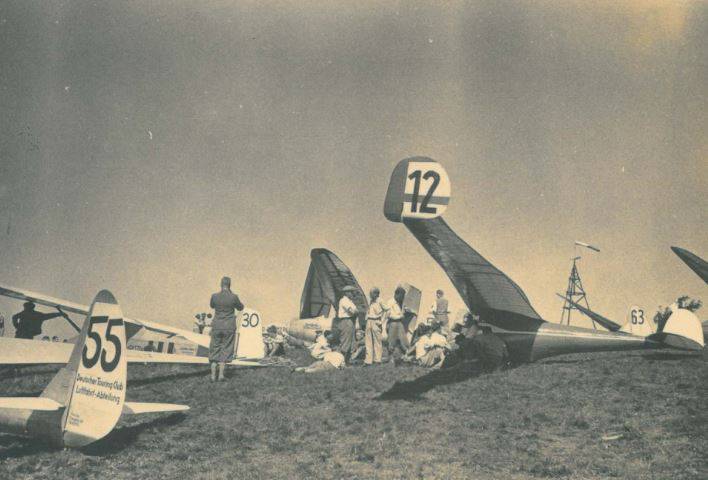How it All Began
The F.1 was the very first self-designed, self-built sailplane of the Akaflieg Stuttgart. It tested out new concepts and its form was optimized via trials in wind tunnels.
An excerpt from the annual report of that year:
Yaw control came from endplates, meaning the fuselage didn’t have to absorb torsional loads. The roll axis isn’t a line, but is curved along the downwind axis. The part of the fuselage behind the skid is raised to prevent damage to the tail and allow for a short take off run. The pilot’s seat is fully enclosed, though the frontal part of the fuselage is jettisonable to allow for the pilot to quickly bail out in case of an emergency. The control collumn unusually hangs from above the pilot, its design allowing for a simplification of the control rods and a reduction of the fuselage’s cross sectional area. Even the control rods for the aileron were fully covered, further reducing drag. The endplates can be jettisoned simultaneously on landing.
As the F.1 arrived to join its first Rhön Gliding Competition in 1933, demanded the technical comission that a fin be added to the aircraft’s tail. This was bitterly commented in the following journal entry: “The fact that this plane has flown 300 km obviously doesn’t prove that it can fly!”. A fin for the F.1 was built overnight though to enable it to join the competition. The F.1 won multiple prizes during competitions at the Wasserkuppe.
Specifications
| Construction | 1932 |
| First flight | July 1933 |
| Method of construction | Wood |
| Wingspan | 16,6 m |
| Wing area | 15,4 m² |
| Profile | Gö 535 / Gö 527 |
| Ultimate load factor | 8,8 g |






